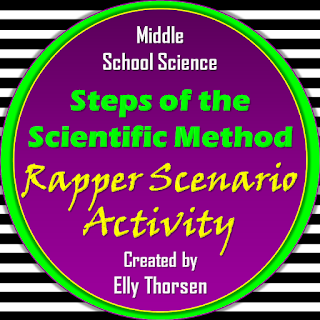Ever since student teaching, I've found the thing I love most about teaching is working with the most "difficult" students. I realize not every student has had a great experience with school (or sometimes even life in general). I value making a connection with these students and seeing them become successful individuals. Once I have a positive connection with the students, I've found that they are willing to work hard and accept the assistance they need to grow. Helping bring about a positive transformation in a student who needed a little (or a lot) of extra help is the most fulfilling part of teaching for me. Recently, I feel like I haven’t had the ability to make these connections as much as I did in the past. The reason why? Class size. Last year I had almost 200 seventh grade students in my science classes. Making the impact I want is significantly more difficult with so many students. Nevertheless, I was still able to reach some of them and help them with achievements both academically and in their daily lives.
Here are some of the ways I've found effective to develop a connection with the “difficult” students in my classes.
- I start by figuring out what they are interested in (student surveys are especially helpful with that) and ask them about it or bring those things into the lesson or classroom somehow.
- Greet them every day with a smile. Ask them how they’re doing. Comment on their new shoes or haircut. Even if they don’t reply initially, most of them appreciate this and begin to respond after a while.
- Share like interests with each other. If a student loves a certain movie and you do too, let them know and talk about it together.
- Recognize their good aspects, abilities, or skills and mention them. (Everyone has some good traits, even if it doesn't seem like it at first.) For example, a student might be good at making people laugh or be a strong leader or even have good handwriting. Tell them. It’ll be meaningful to them.
- If they are acting out and need to be corrected, don’t let it slide. Be fair. Hold them accountable for their misbehavior and discuss it with them. They might not like it initially, but it shows you care and expect them to behave appropriately.
- Explain why you have rules and consequences. If they break a rule, explain why you have that rule and why students who break that rule get the consequences they do. Be honest about this. If you yourself don’t know why you have certain rules or consequences, you might want to revamp your system. (I've done this in the past and it makes a huge difference.)
- Show you care by asking what's bothering them if they seem upset or not themselves.
- Whenever they do something notable, recognize it! One thing I like to do is write a short letter to their parents or guardian about the great things their child has been doing, put the note in an unsealed envelope, and give the note to the student to take home. I keep the envelope unsealed to ensure the student takes a peek at it before delivering it. Here's a positive note home you can use with your students today. Another way I recognize great behavior is by mailing a short letter to the student. This takes them by surprise and means so much to them. I've had students turn completely around simply with one letter.
Teaching can be a difficult and trying profession, but for me the rewards are huge. Interacting with middle school students and teachers is exciting and fun. The potential for making positive differences on the lives of my students, especially the most “difficult” ones, provides the greatest fulfillment. That is what I really love about my profession.
Are you a middle school science teacher? Sign up for my newsletter! You'll get a free science resource just for joining.










